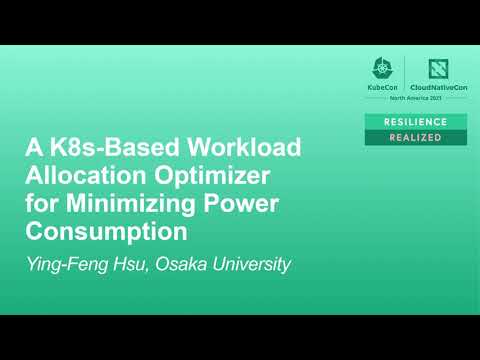Description:
Explore a conference talk on optimizing Kubernetes workload allocation for minimized power consumption. Discover how the Workload Allocation Optimizer (WAO) leverages machine learning to predict power increases and introduces a scoring plugin to the K8s scheduler framework. Learn about the WAO-load balancer's role in assigning Pods to Nodes for optimal power usage. Gain insights into implementing power-saving strategies for cloud-edge computing systems, demonstrated in a real edge data center with over 200 servers. Understand the tradeoffs between service performance and data center power savings, and explore the architecture of WAO-based schedulers and load balancers. Examine evaluation results for power consumption reduction, response time, and the complete K8s-WAO solution's performance in various scenarios.

A K8s-Based Workload Allocation Optimizer for Minimizing Power Consumption
Add to list
#Conference Talks
#Computer Science
#Machine Learning
#DevOps
#Kubernetes
#Business
#Performance Evaluation
#Load Balancing